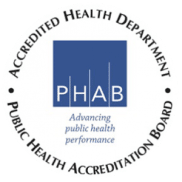The Rabies Laboratory at the Glen F. Baker Public Health Laboratory specializes in the detection of the rabies virus present in the brain tissue of suspected animals for the state of Arkansas. In addition to diagnostic testing, the lab contributes to rabies surveillance across the state, providing critical data for public health interventions. The Rabies Lab works closely with local health units, veterinarians, and the public to ensure that all cases are managed effectively and that an appropriate treatment response can be initiated promptly.

Rabies Testing Information
The laboratory accepts the heads or brains of any animal except small mammals such as bats, mice, or squirrels, which may be submitted whole.
It is preferable to have a veterinarian or animal control officer remove the head prior to submitting the specimen. If an individual decides to remove the head, they must use appropriate protective clothing including disposable waterproof gloves, a mask, safety glasses or goggles, and coveralls or a waterproof apron.
Rabies Package and Shipping Procedures
Shipping containers for packaging and transporting the specimen to the Rabies Laboratory are available at every local health unit.
Step 1: Place the specimen in the large Ziploc bag provided in the shipping container and seal it shut. Then place and seal the bag inside the second Ziploc bag.
Next, chill the specimen in a refrigerator or on cold packs prior to packaging. (Cold packs are provided with the shipping container, but cold packs must be frozen prior to packaging).
It is extremely important to keep the specimen cool prior to and during shipment to slow decomposition of the specimen. Freezing the specimen is also acceptable but will delay results due to the thawing process.
Step 2: Place the Ziploc bag containing the animal head/brain and at least two (2) cold packs inside the Styrofoam container that is inserted in the white plastic bucket. Replace the Styrofoam lid onto the container with the specimen and cold packs inside. (More than two cold packs may be necessary for larger specimens).
Step 3: Fill out the online Rabies Examination Submission Form by clicking the link or scanning the QR Code. Print out the summary page from your submission to include with the specimen, or at a bare minimum include the Survey number assigned to your specimen.

Step 4: Place the plastic lid on the plastic bucket and snap it shut. This may require a hammer to ensure a complete seal. Put the plastic bucket inside the provided cardboard box and tape it shut. Also tape an envelope with the lab address on the outside of the box.
Step 5: Deliver the specimen as soon as possible to your nearest local health unit for shipping to the laboratory. Alternatively, the specimen may be shipped by UPS Monday through Thursday only or brought directly to the Public Health Laboratory.
- See Rabies Specimen Delivery Instructions for additional details.
Rabies Testing FAQs
Is there a fee for rabies testing?
The laboratory does not charge for the rabies virus test as it is offered as a public health service to the community, although veterinarians may charge for removal of the head and for transportation costs for submission to the rabies laboratory. Arkansas Livestock and Poultry Commission also charges to remove brain tissue from large animals and for disposal of the carcass and transportation of the specimen to the laboratory. Please note that the laboratory is not responsible for any charges.
If a test result comes back positive, what happens next?
Results are communicated directly to the submitting facility by the laboratory’s administrative personnel or by the analyst conducting the test. If a result is positive, an epidemiologist or physician is notified as well as anyone exposed to the animal so that proper treatment can be administered as soon as possible.
When is a sample unsuitable for testing?
Samples that are decomposed, damaged, or formalinized are unsuitable for testing. Do not shoot or damage the animal head in any form. A correctly submitted specimen must possess the three following parts of the brain tissue of the animal: brain stem, hippocampus, and cerebellum. See Steps for Rabies Sample Preparation for more information.
What do I do in case of an emergency?
Face-bites to a human being from a suspected infected animal are considered emergency situations. A family physician should be notified immediately as well as the ADH Public Health Veterinarian at 501-280-4136.The laboratory will test the suspected animal as soon as possible.
Resources
- ADH Rabies
- ADH Epidemiology
- Online Rabies Submission Form
- Steps for Rabies Sample Preparation
- Rabies Specimen Delivery Instructions
- Center for Disease Control (Rabies)
- Rabies Aware Arkansas
Contact Us
Rabies Microbiologist: 501-661-2840
Rabies Laboratory Supervisor: 501-661-2454
The laboratory will only answer questions related to issues concerning laboratory testing and results. For other rabies-related treatment questions, please contact the ADH Public Health Veterinarian or Zoonotic Disease Epidemiologists at 501-280-4136.


